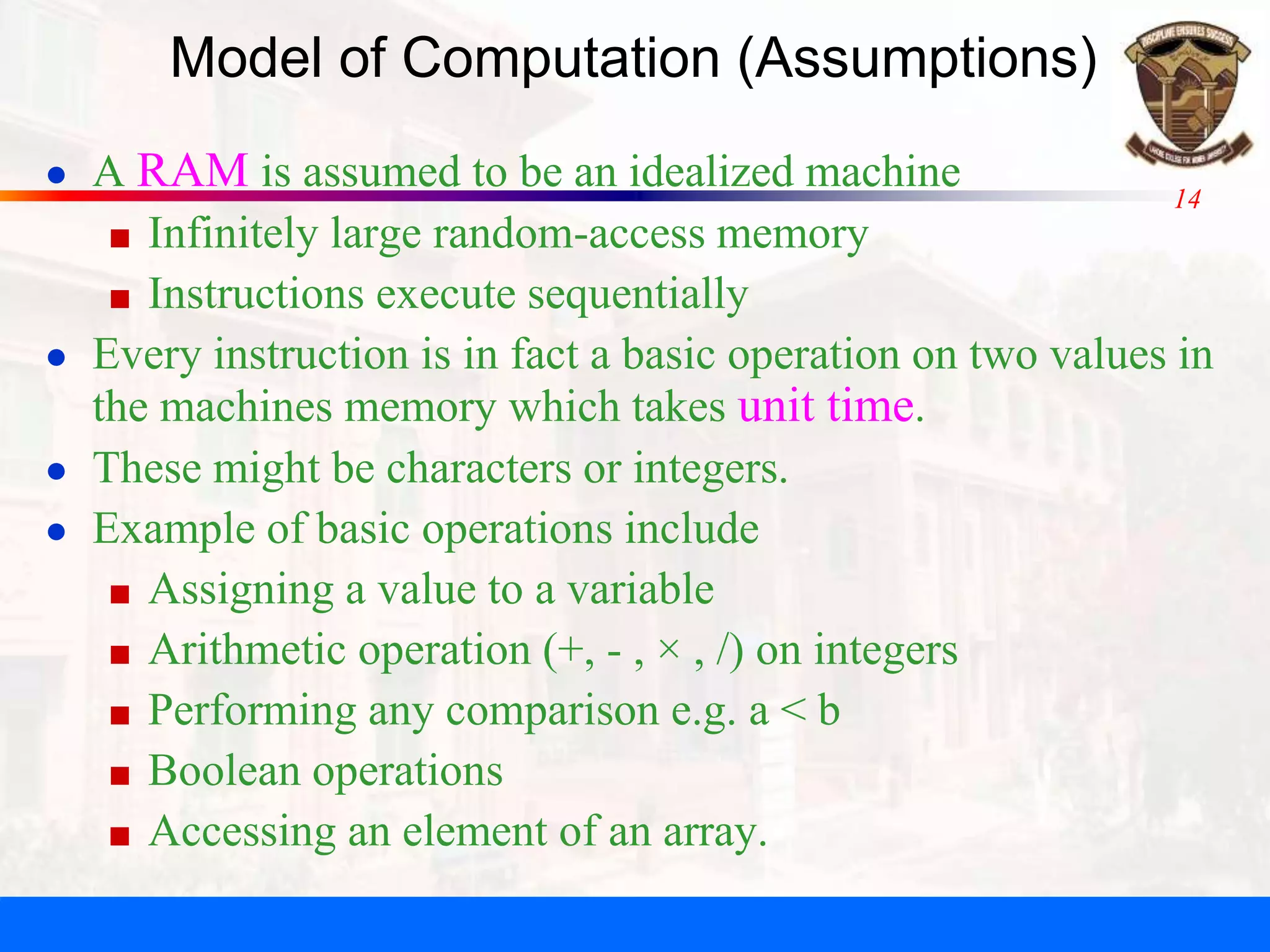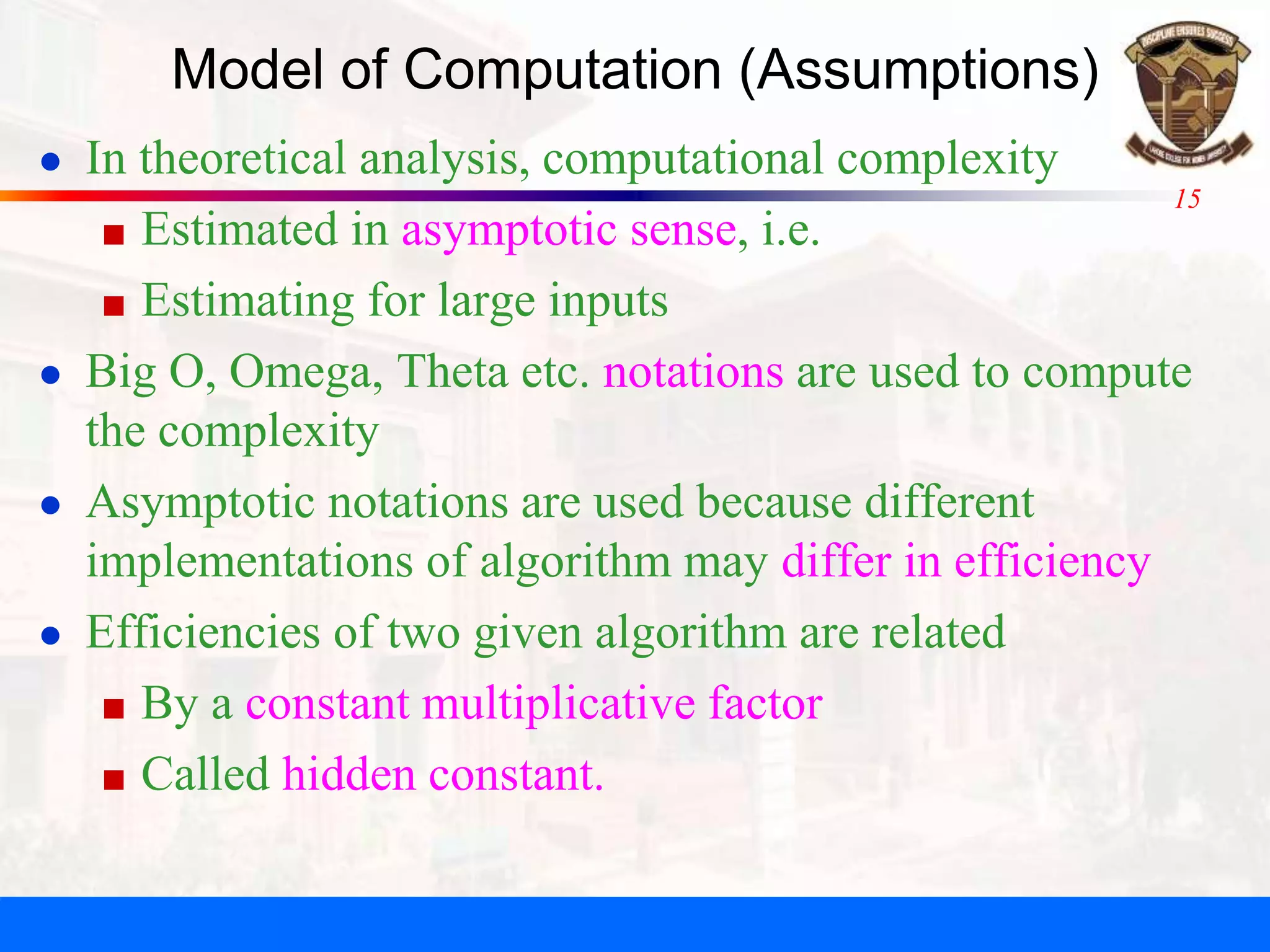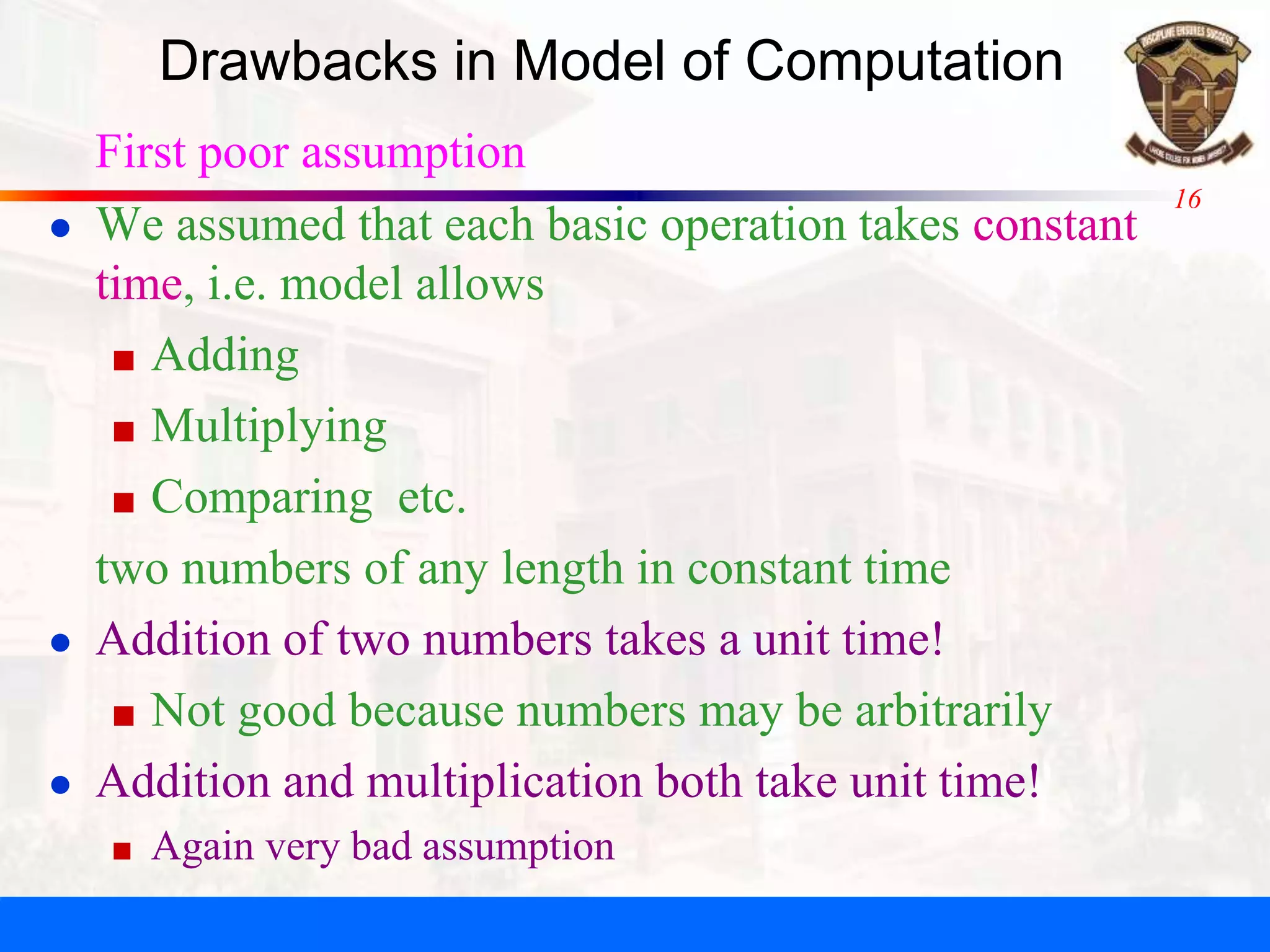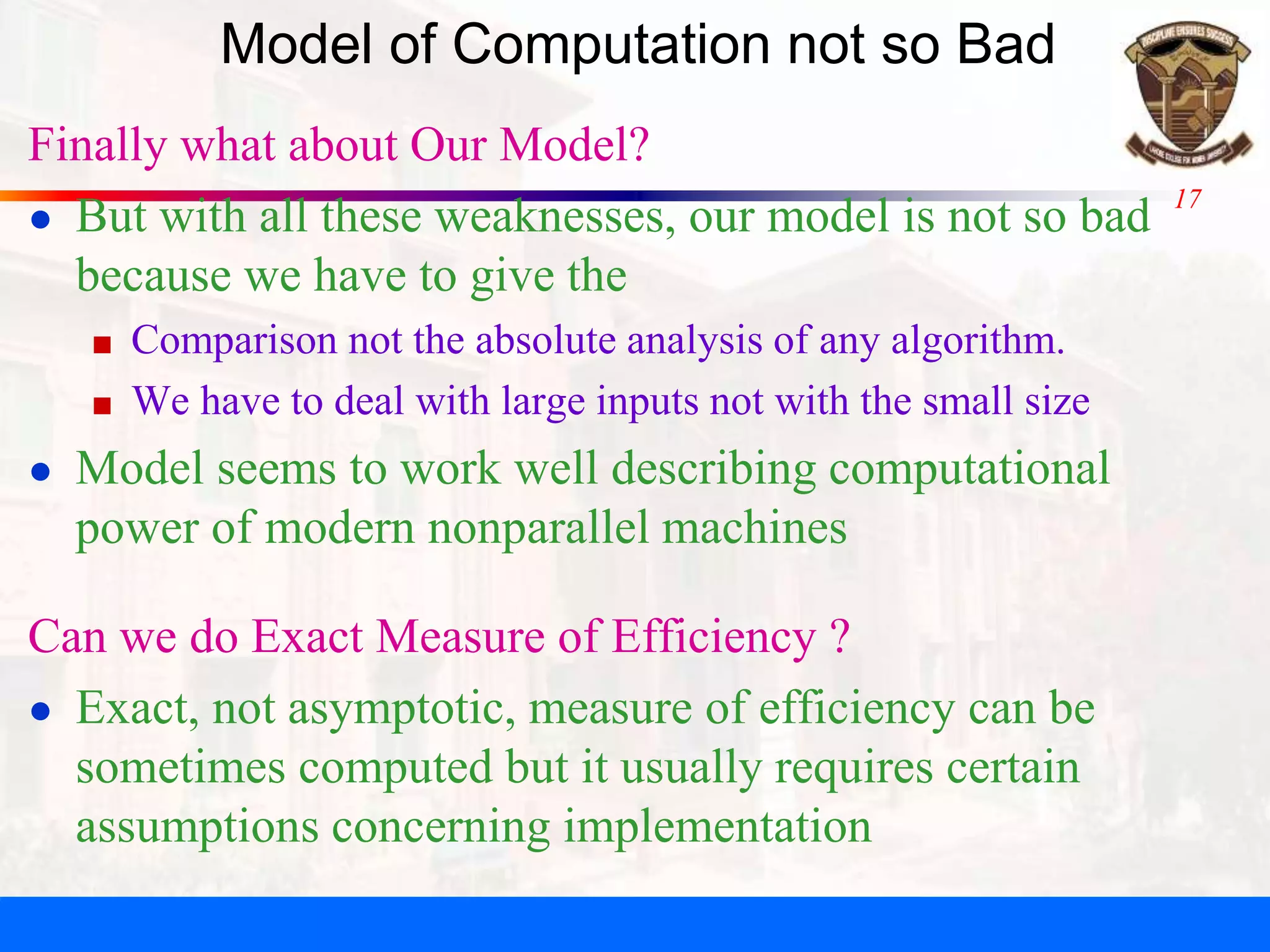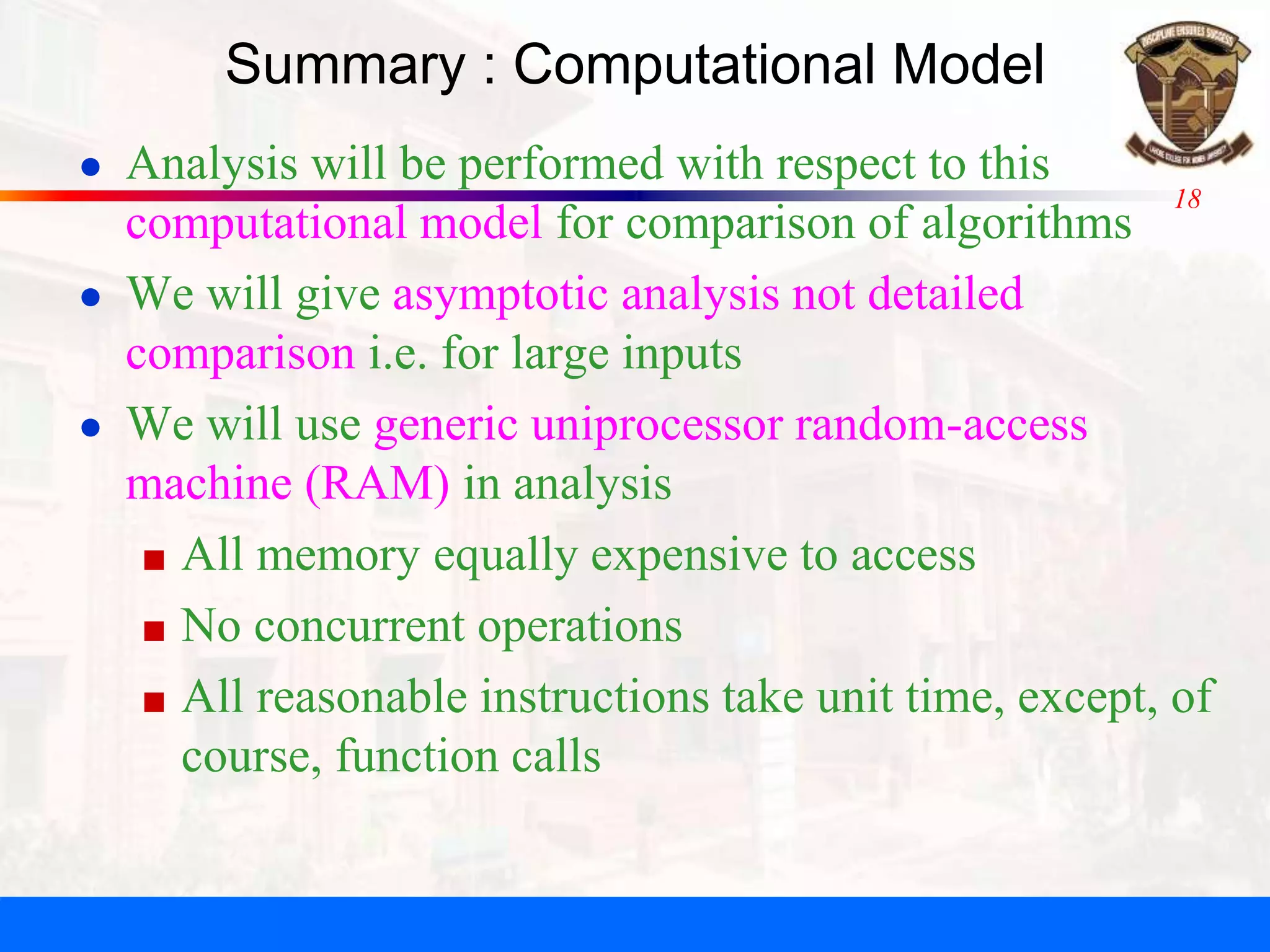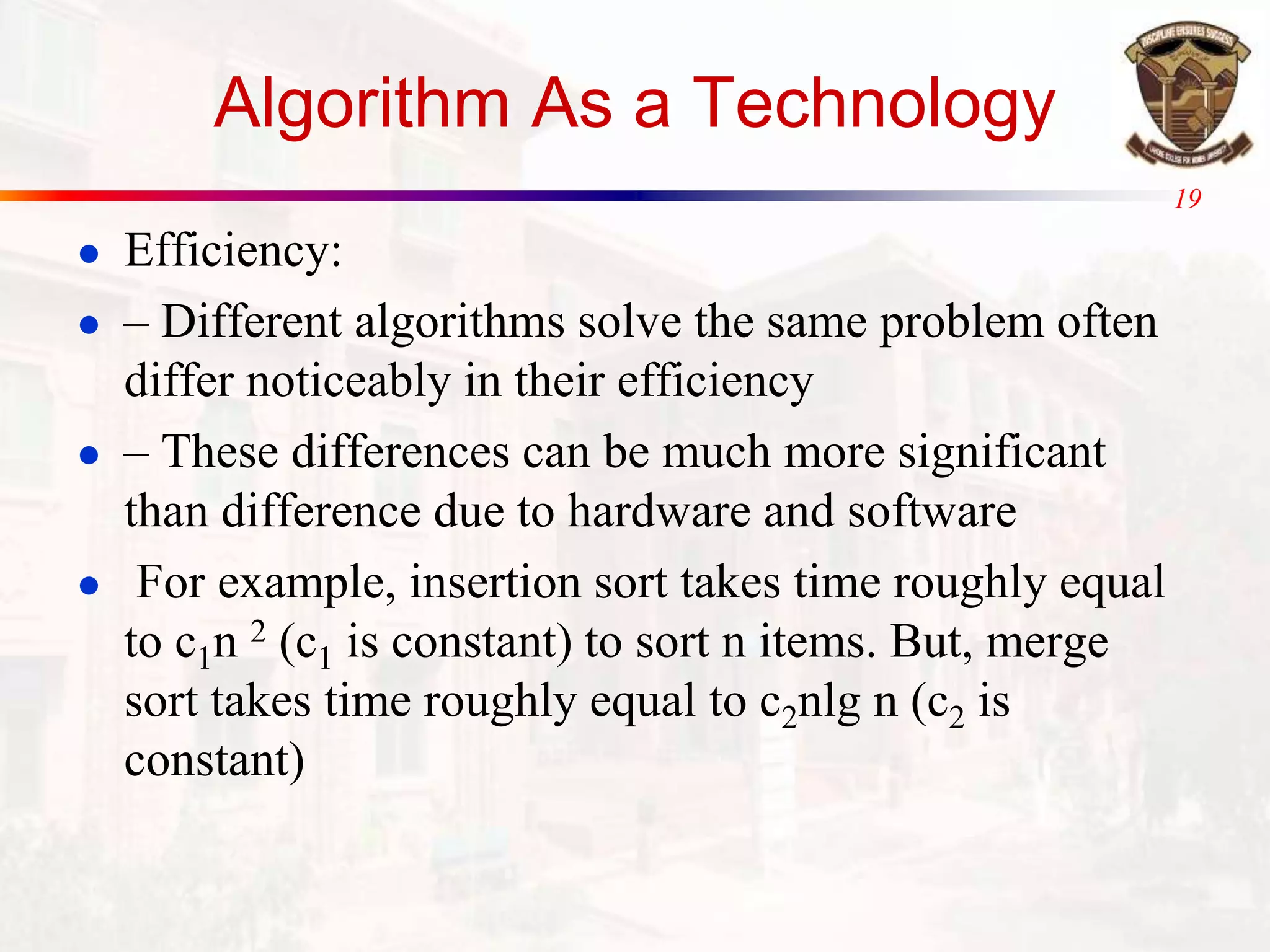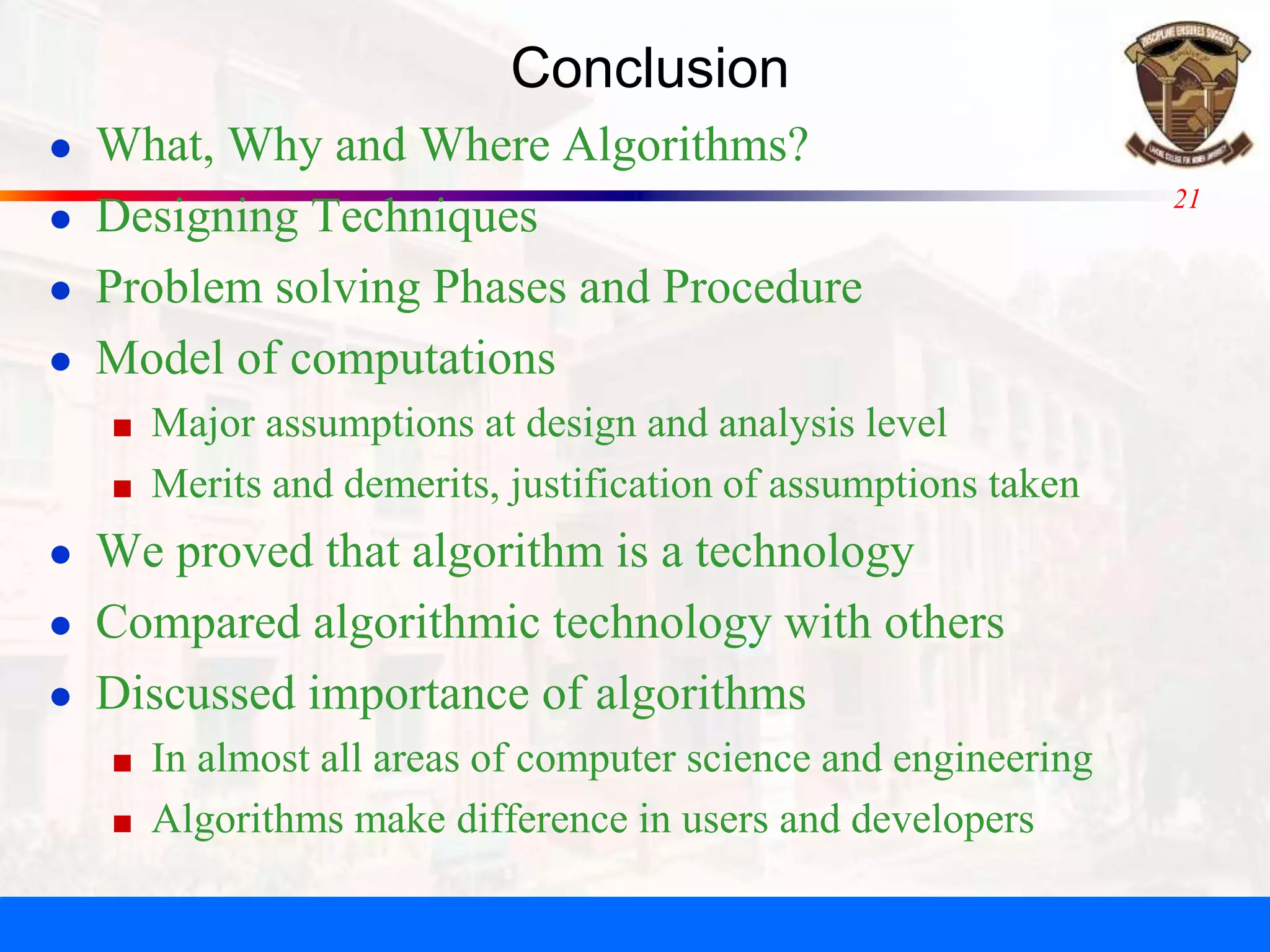The document discusses an algorithms analysis and design course. The major objectives are to design and analyze modern algorithms, compare their efficiencies, and solve real-world problems. Students will learn to prove algorithm correctness, analyze running times, and apply techniques like dynamic programming and graph algorithms. While algorithms can differ in efficiency, even on faster hardware, the computational model used makes reasonable assumptions for comparing algorithms asymptotically.

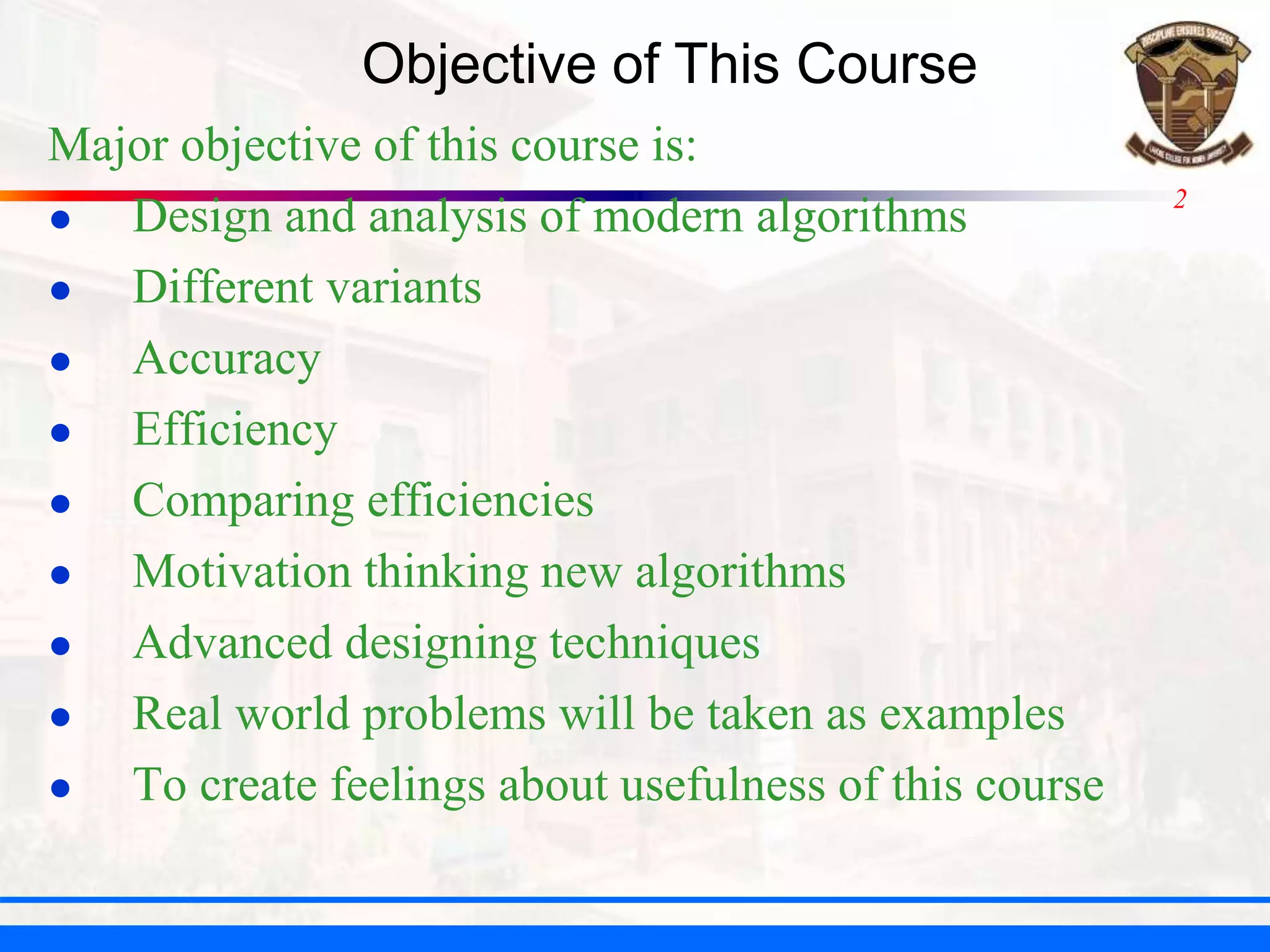
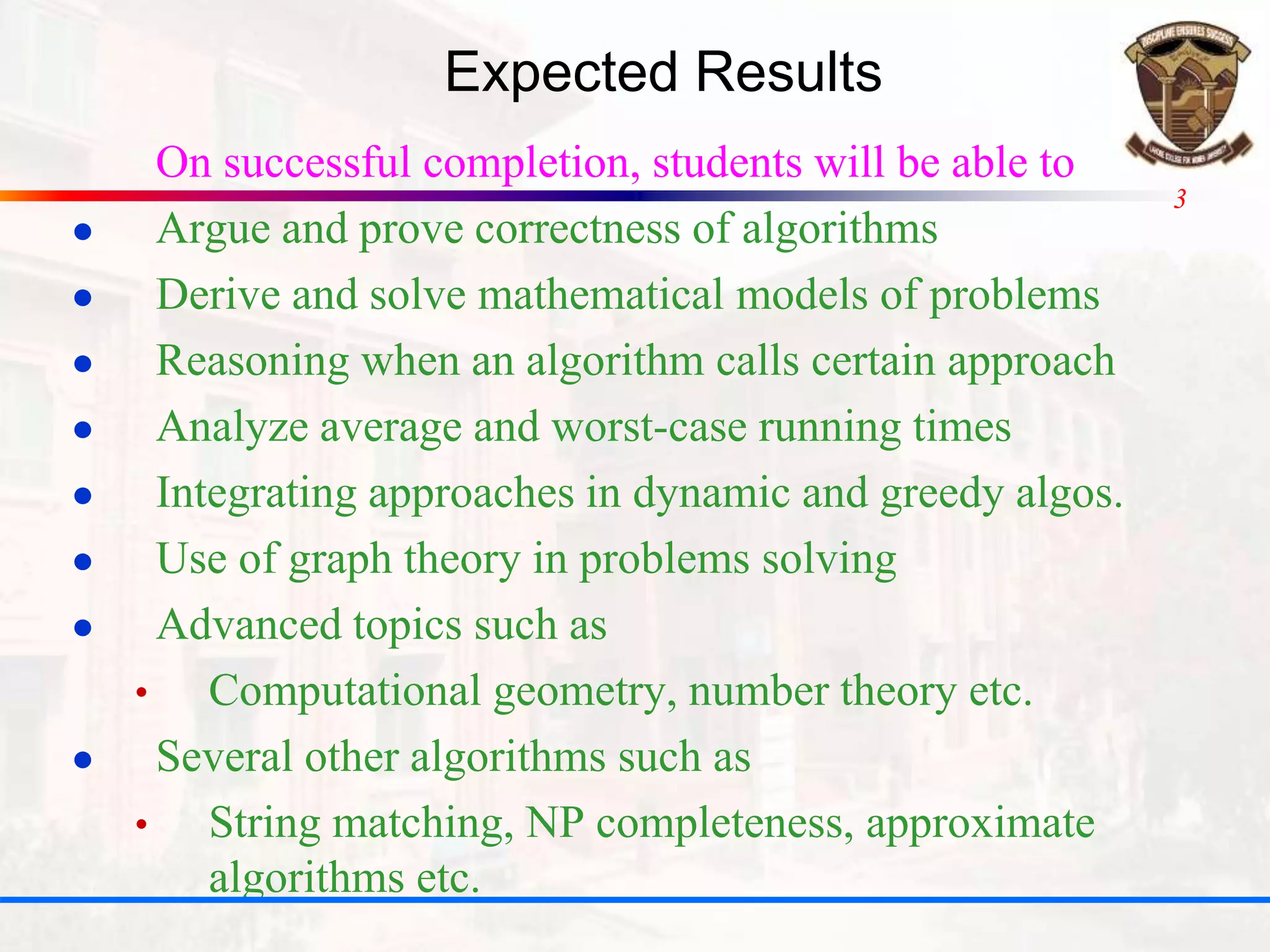

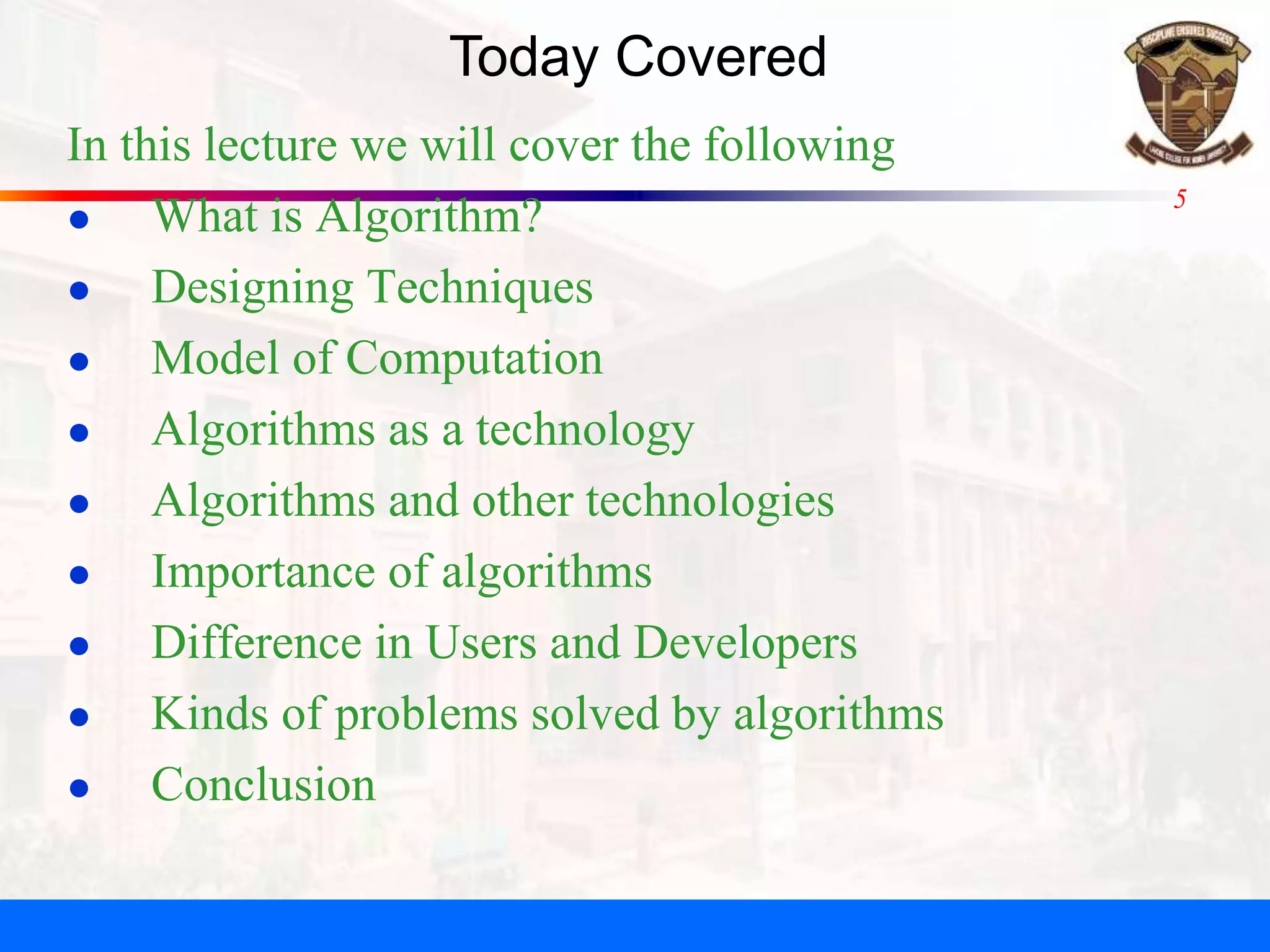
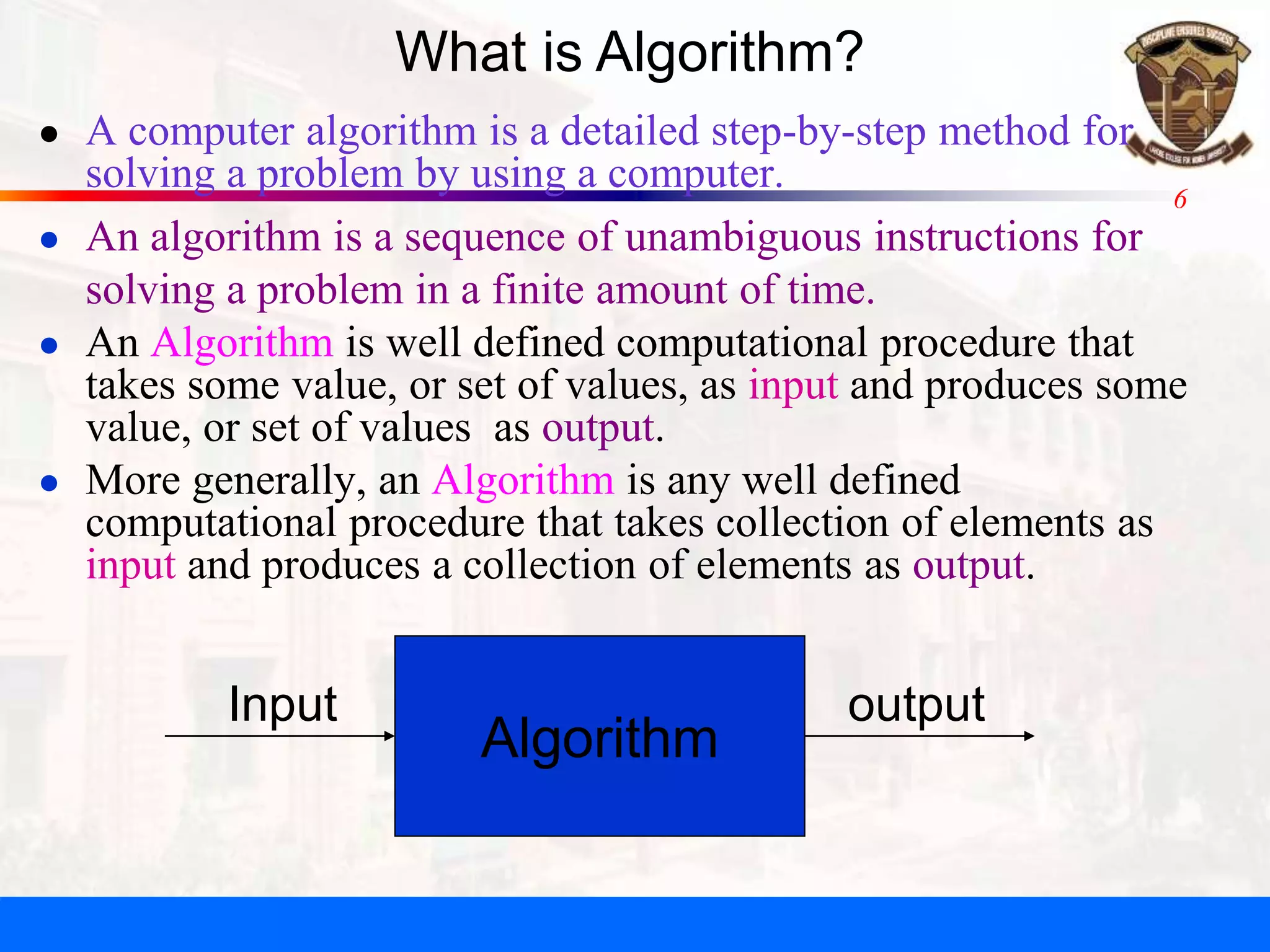
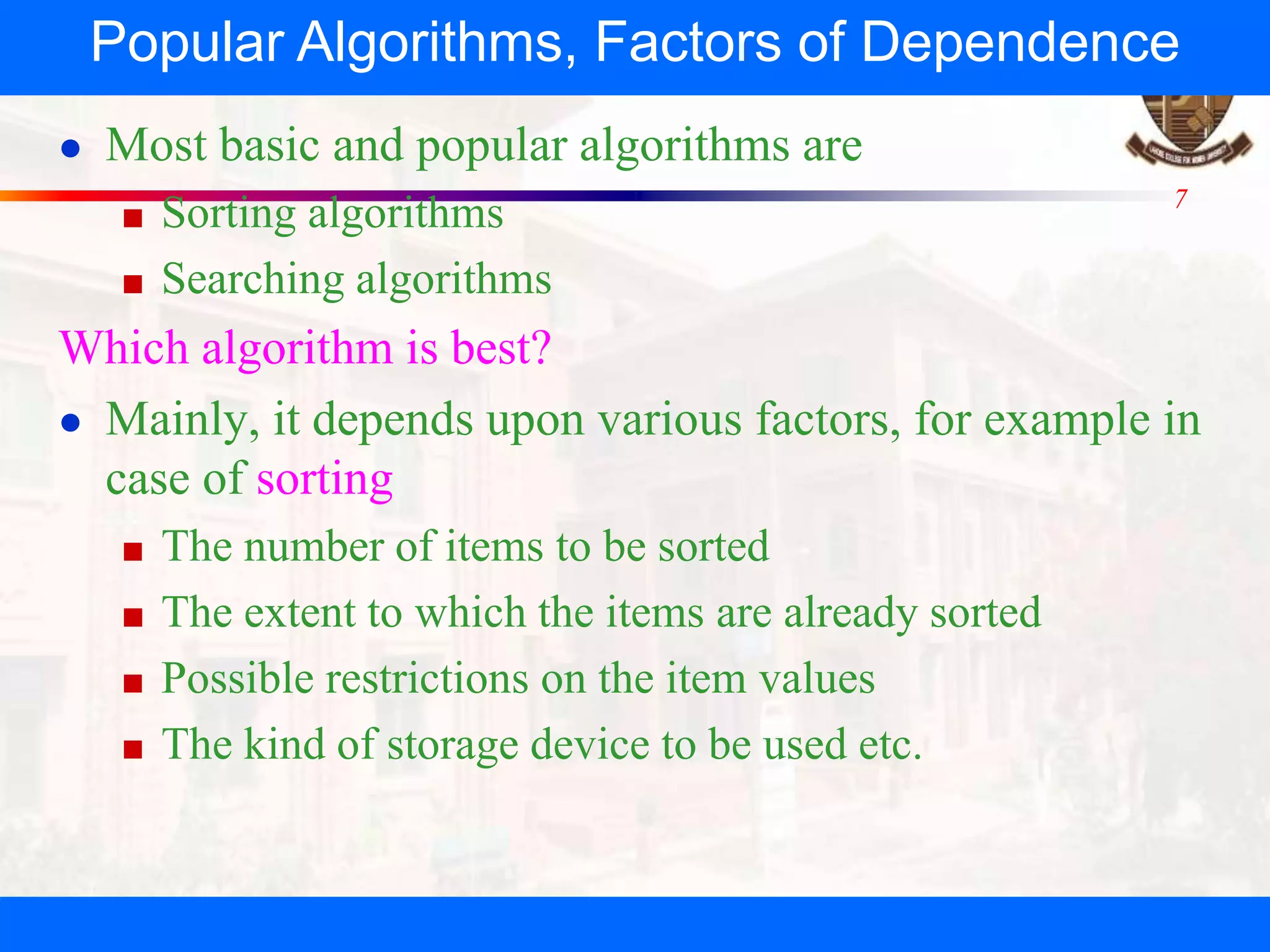
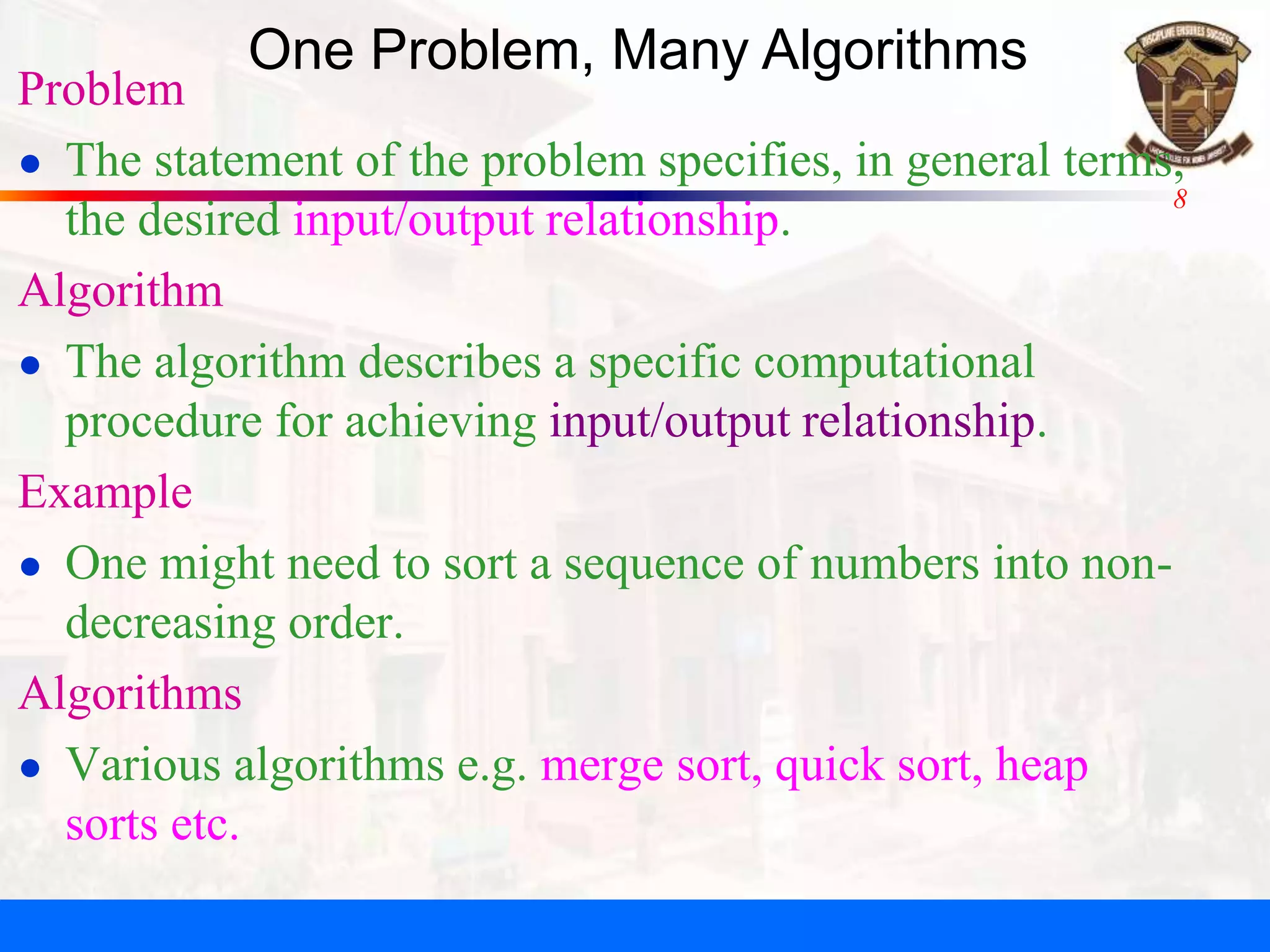

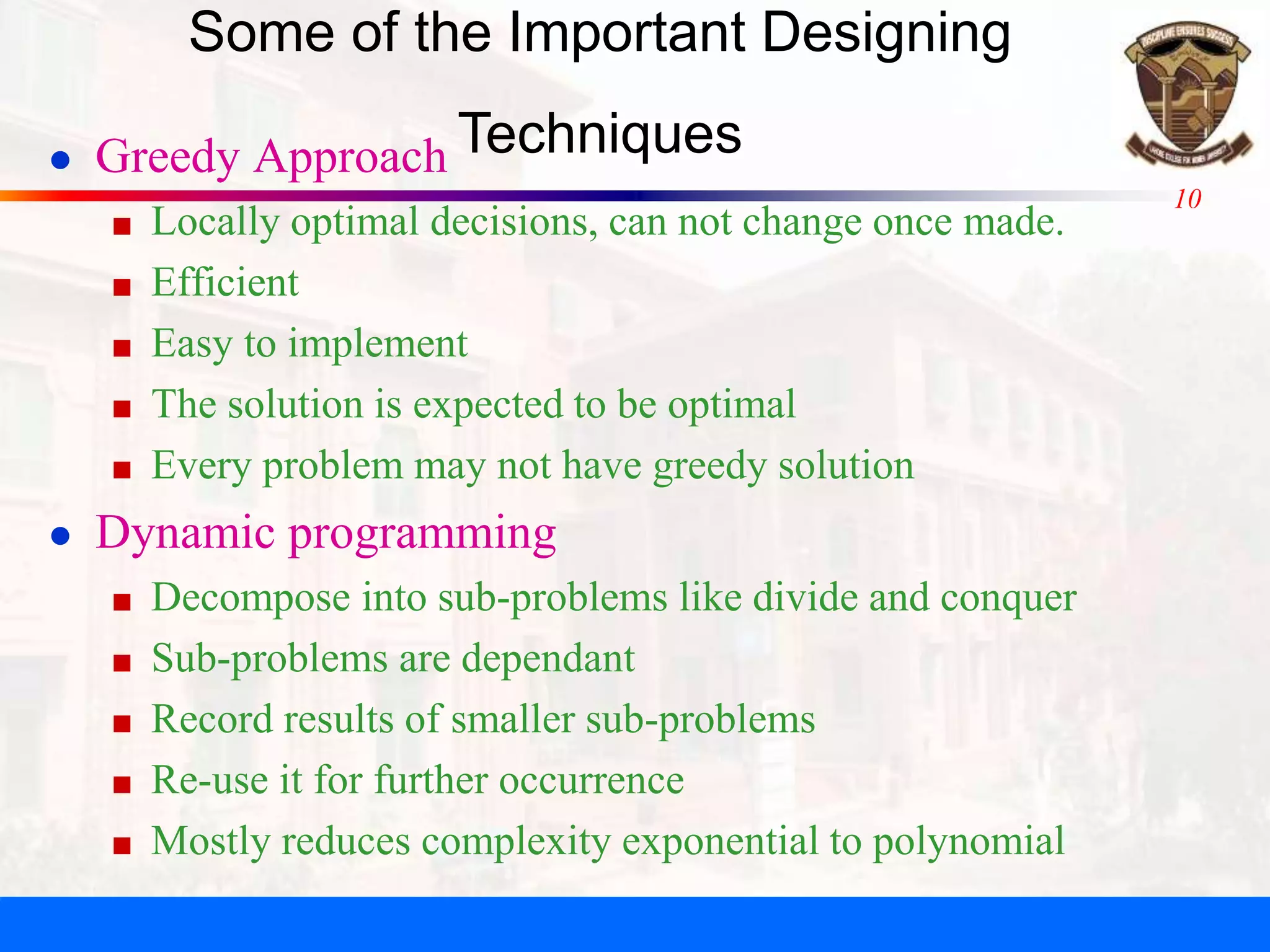

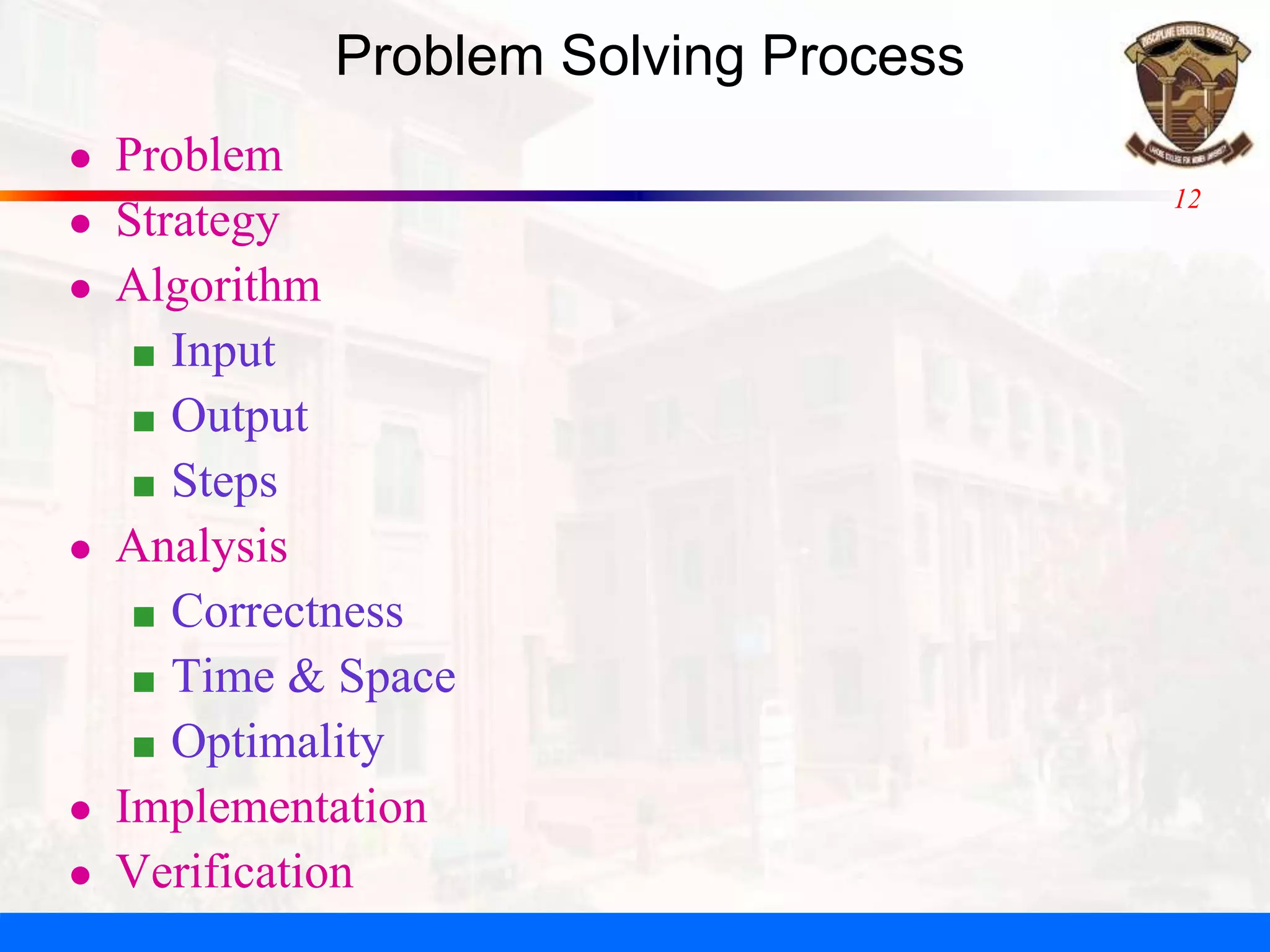
![13 ● Design assumption ■ Level of abstraction which meets our requirements ■ Neither more nor less e.g. [0, 1] infinite continuous interval ● Analysis independent of the variations in ■ Machine ■ Operating system ■ Programming languages ■ Compiler etc. ● Low-level details will not be considered ● Our model will be an abstraction of a standard generic single-processor machine, called a random access machine or RAM. Model of Computation (Assumptions)](https://image.slidesharecdn.com/lecture01algorithmanalysis-200903060008/75/Lecture01-algorithm-analysis-13-2048.jpg)
